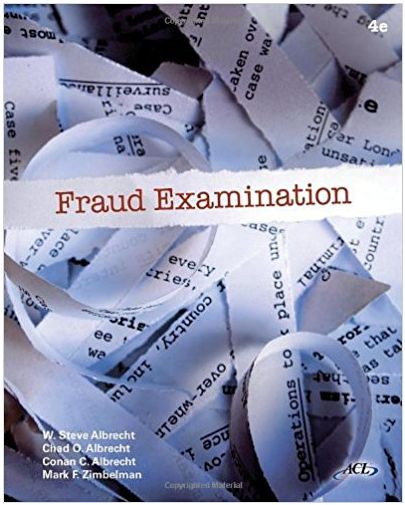(Multiple Choice) 1. Which of the following methods of gathering documents is based primarily on luck? a....
Question:
1. Which of the following methods of gathering documents is based primarily on luck?
a. Documents discovered during audits.
b. Hard-to-get private documents that are subpoenaed.
c. Documents discovered through searching public sources.
d. Documents provided by tipsters.
2. Which of the following is true of graphologists?
a. They can only perform their work in laboratory settings.
b. They perform the same type of work as forensic document experts.
c. They study handwriting as a way to interpret and identify personalities.
d. They are required to be members of the ABFDE organization.
3. What can a fraud examiner conclude if one or more instances of fraud are found in a sample taken from a population?
a. There is a slight risk that fraud exists in the population.
b. The population contains fraud.
c. The sample may not have been randomly selected, and thus no conclusions can be drawn.
d. The sample is most likely not representative of the population as a whole.
4. What can a fraud examiner conclude if his or her tests confirm that no instances of fraud are present in a sample taken from a population?
a. There is virtually no risk that fraud exists in the population.
b. The population contains no fraud.
c. Only that no fraud is present in that particular sample.
d. The sample is most likely not representative of the population as a whole.
5. How are most frauds concealed?
a. By shredding source documents.
b. By converting to a paperless office without paper transactions.
c. By creating fictitious documents or altering source documents.
d. By firing employees who will not go along with the fraud.
6. Which of the following is usually the best way to obtain documentary evidence?
a. Computer-based queries of full-population accounting and other databases.
b. A statistically sound sampling approach like discovery sampling.
c. Chance, accident, or tip discovery.
d. None of the above are effective methods of discovering evidence.
7. Programs like CaseMap, CaseCentral, ZANTAZ, Ringtail, and DatiCon are examples of:
a. Software that implements discovery sampling techniques.
b. Link analysis software.
c. Software packages used to index and store evidence.
d. Forensic software used to investigate hard drives and other digital devices.
Fantastic news! We've Found the answer you've been seeking!
Step by Step Answer:
Related Book For 

Fraud examination
ISBN: 978-0538470841
4th edition
Authors: Steve Albrecht, Chad Albrecht, Conan Albrecht, Mark zimbelma
Question Posted:





